I Threw My MIL Out of My Wedding After Opening Her Humiliating Gift

Whoosh! Debris “runs” through outer space all the time, often heading toward our planet. We’re mostly not aware of it. Most of that debris burns up when it enters our atmosphere anyway. We DO get to enjoy the bright blaze in the clear night sky because, from time to time, we see it as fleeting meteor showers.
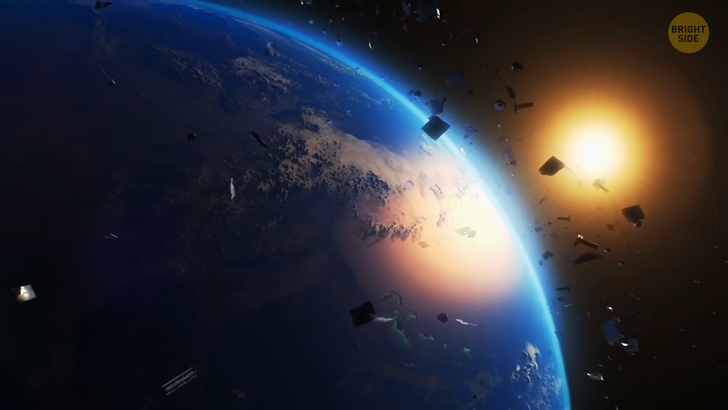
But sometimes a meteorite is tough enough to survive the atmosphere and large enough to leave a remarkable spot on our planet. We’re talking about what often looks like nearly circular, excavated holes. Nestled in the Colorado Plateau in northern Arizona, Barringer Crater is a rimmed pit in the shape of a bowl we also call Meteor Crater. It’s relatively young since it formed only 50,000 years ago. There was this enormous iron meteor [98-164 feet in diameter] that hit at eye-watering speeds of up to 26,000 mph. It exploded so hard that the meteorite excavated an amazing 175 million tons of rock.
Daniel M. Barringer first identified this crater. He strongly believed the pit was a result of a meteor hitting our planet, but not many scientists believed him. Barringer spent a couple of years investigating this crater to prove his theory. Not just that — he also hoped to find some of the valuable metal content, but a major part of this once pretty large meteorite would have been destroyed during the collision. Kaali Crater.
At first, it seems like you’re looking at a nice swimming spot. But, 7,500 years ago, another meteorite headed towards the Earth. While passing by through our planet’s atmosphere, it fell apart and hit our planet in fragments. That’s how Kaali Meteorite Crater Field formed — a group of 9 meteorite craters in the Estonian village of Kaali, that’s located on one of the country’s islands [Island of Saaremaa].
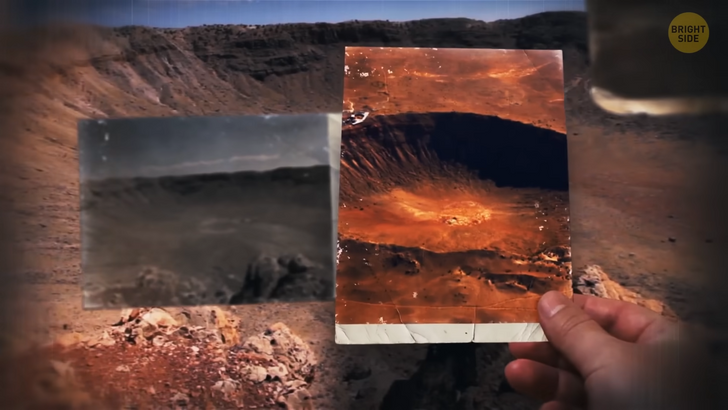
The largest crater ended up being 360 feet wide and 72 feet deep. The rest of the 8 smaller holes are located right around the main one. It’s a tourist attraction today, but imagine how panicked our pre-historic ancestors that lived there must have felt while watching these gigantic rocks fall from the sky. Also, there’s a chance the surface of this island was covered in forest, but it all probably burned down during the impact.
South Africa has its own gem too — Vredefort [FREE-de-fort] Crater, the largest and the oldest one in the world. More than 2 billion years ago, a meteorite with a diameter of 6 miles struck our planet close to today’s Johannesburg, South Africa. This impact was nearly twice as powerful as the one that made the dinosaurs go extinct. Almost right after the meteorite hit the ground, the crater formed. The hole shallowed and widened as the rock below began to rebound — plus, its walls collapsed.
The meteorite that hit this spot was probably 6 to 9 miles in diameter. If a celestial object that hit the Earth is bigger than 0.6 miles, it could have effects on the global level. So this one probably caused fires across the world. Also, enormous amounts of dust probably ended up in the atmosphere which changed the climate for months, maybe even years.
Lonar Crater is an astonishing spot in Southern India [Deccan Plateau], discovered almost 200 years ago. The pit lies within a large plain of basaltic rock left over from violent volcanic eruptions in this area, which happened 65 million years ago. Scientists even thought it was a volcanic crater at first. But soon they realized it was the result of a strong meteor impact up to 50,000 years ago.
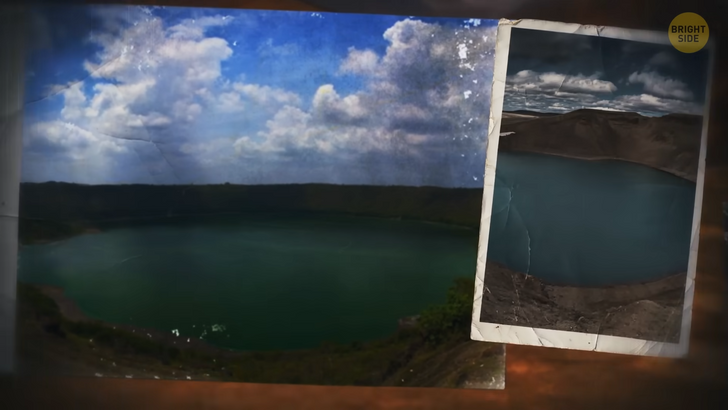
Look how specific balsatic rock is — and Lonar Crater is the only one formed in such a type of rock. There are trees all across the low crater hills. And you can find a couple of interesting species over there, such as chinkara, peafowl, and gazelles — plus, you can see many migratory birds flocking to the lake in the cold winter months. Yup, there’s a lake there, and it’s both alkaline and saline.
In 2020, it surprised local people because it changed its color to a rosy pink. It seemed unusual at first, but then scientists discovered such a specific color was the result of a growing population of a specific type of salt-loving microscopic organisms [Haloarchaea] that produce such a pink pigment. This place is important for Indian mythology too, which is why there are multiple temples around the edge of the crater.
Here’s something really remarkable — the Ries crater contains an entire town within its inner ring! It’s a small town in Germany [Nördlingen]. You can see the full result of this impact only from the air. The town walls highlight the inner ring of this crater that’s about 0.6 miles (1 km) in diameter. Those are probably the dimensions of the meteorite that formed the crater. You can’t distinguish the rest of it so easily, since the crater has been eroded away. That means natural forces such as rain and winds have changed it.
In the heart of the Ungava plateau lies the amazing Pingualuit [PIN-gwah-LOO-it] crater [Pingualuit National Park]. The crater has its own pristine rainwater, some of the purest water you could find. It’s not in any way linked to other lakes in that area nor does it receive water from them. The water there accumulates from snow and rain. It’s only lost when it evaporates.
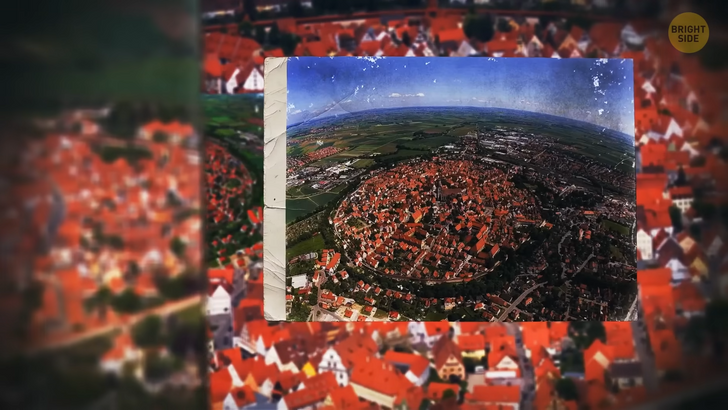
The depth of almost 900 feet [876 feet] is like a window to the crater’s rich geological past. Scientists found different elements such as cobalt, nickel, and iron that helped them determine it was a specific type of meteorite [chondrite] where its parent body hadn’t modified it in any way. The parent body is the celestial body from which a single meteorite or an entire class of them originate. Pingualuit crater formed over a million years ago. There are even traces of stones set in a circular arrangement and rock shelters. People that used to live in this area would set up camps on the ridges of the crater. It was a good position for them to catch animals and stay safe at the same time.
Australia is home to some of the world’s most fascinating impact craters. In its western part, you can find the massive Wolfe Creek Crater. It’s the world’s second-largest crater that lies on the edge of the Great Sandy Desert [Wolfe Creek Crater National Park]. More than 100,000 years ago, one meteor was most likely traveling at crazy speeds of 10 miles per second before finally slamming into the desert.
Scientists discovered it in the middle of the 20th century, but local people had known about it long before that. They had many cultural stories about that crater. One was about two ancestral snakes who were so incredibly big they managed to form both Wolfe and the nearby Sturt Creeks as they were making their way across the desert. One of those giants emerged from the ground, and that’s where the big crater is today. It’s dangerous to climb there since rocks are pretty loose. But that’s where you can see some interesting animals like brown ringtail dragon lizards catching insects for lunch or Major Mitchell’s cockatoo harvesting seeds from the plants that grow on the crater floor.
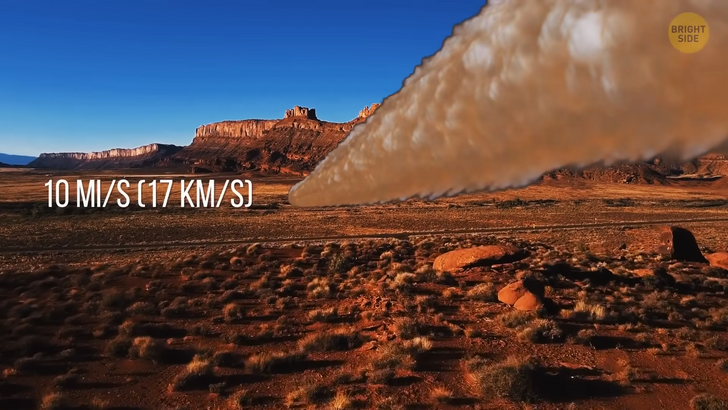
Another “must-see” crater in Australia is Gosses Bluff. It lies in the heart of the continent, sandwiched between the James Range and Macdonnell Range. It’s a place of great cultural importance, so if you’re visiting, respect signs stating which areas you’re not allowed to access.
A giant meteor slammed into our planet more than 140 million years ago. It was a really long time ago, so the original crater has been eroded through time. But even today, you can still see its core — a central ring of hills nearly 3 miles in diameter. This looks like you’re on Mars, doesn’t it?
It’s actually southwestern Algeria and its famous Amguid Crater. This one is relatively young, considering it’s a result of a meteor impact that happened 100,000 years ago. This crater has an almost perfectly circular shape. Its center is unusually flat because of the type of soil at the bottom [eolian silt] and the fact it’s tightly compacted.











